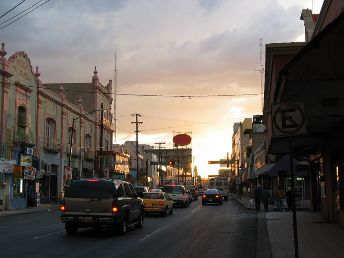by Bernd Debusmann, Jr.
Mexican drug trafficking organizations make billions each year trafficking illegal drugs into the United States, profiting enormously from the prohibitionist drug policies of the US government. Since Mexican president Felipe Calderon took office in December 2006 and called the armed forces into the fight against the so-called cartels, prohibition-related violence has killed over 18,000 people, with a death toll of nearly 8,000 in 2009 and over 2,000 so far in 2010. The increasing militarization of the drug war and the arrest of several high-profile drug traffickers have failed to stem the flow of drugs -- or the violence -- whatsoever. The Merida initiative, which provides $1.4 billion over three years for the US to assist the Mexican government with training, equipment and intelligence, has so far failed to make a difference. Here are a few of the latest developments in Mexico's drug war:

In Ciudad Juárez, three people with ties to the US consulate in the city were murdered in two different incidents. In the first incident, a Mexican man, Jorge Alberto Sancido Ceniceros was shot dead by gunmen. Ten minutes later, a US consulate worker, Lesley Enriquez, and her husband, Arthur Redelfs, were chased down and killed by gunmen just blocks from the border. Two children were wounded in the first incident, and the seven-month old daughter of the couple was left unharmed in the second incident.
Initial reports suggest that the killings were carried out by the Aztecas gang, which is tied to La Linea, the armed wing of the Juárez Cartel. Although reports have been conflicting, it appears as though the killings may have been a case of mistaken identity. Additionally, the killings prompted another visit to Ciudad Juárez by Mexican President Felipe Calderon, and more angry demonstrations against his policies.
Soon after the murders, the State Department urged Americans to delay all non-essential travel to parts of large swathes of Northern Mexico.
Monday, March 15
In the Pacific resort city of Acapulco, 17 people were killed in clashes over the weekend. At least four of the dead were found decapitated, two of them found near a busy strip of nightclubs and bars. In another incident, six police officers were killed when their patrol was ambushed in the outskirts of the city.
In a separate incident in the state of Guerrero (of which Acapulco is part), 11 people were killed in a ferocious gun battle between soldiers and gunmen. The incident began when soldiers knocking on the door of a home in the town of Ajuchtitlan del Progreso were met with gunfire, sparking the battle, which took place in broad daylight in the center of town. Of the 11 killed, one was a soldier and 10 were suspected drug traffickers.
In Nuevo Leon, eight men were killed in running gun battles between Mexican Navy commandos and suspected members of the Gulf Cartel. The incident began after the gunmen tried flee in several vehicles after detecting the presence of helicopters and the commandos. No sailors were reported wounded or killed in the battle.
In the town of Creel, Chihuahua, seven people were killed by suspected drug traffickers. The killings were carried out by a large group of gunmen traveling in at least 15 separate vehicles. Three of the dead were found outside a home, while the other four were found on a highway leading away from the city, after presumably being dumped there by the gunmen. In November 2008, Creel was the scene of a particularly violence incident in which 13 people, including one child, were killed after being attacked by gunmen.
Wednesday, March 17
In the state of Tamaulipas, across the border from south Texas, 10 people were murdered in several incidents. In one, a vehicle abandoned near the town of Llera was found to contain four bodies. Near the town of Jimenez, three gunmen were killed after a firefight with the army.
In other parts of Mexico, six people were killed in Sinaloa, three in Sonora, and three in Cuauhtémoc, Chihuahua. In Nuevo Leon, a man was gunned down after attempting to flee from soldiers.
Total Body Count for the Week: 296
Total Body Count for the Year: 2,072
Total Body Count for 2009: 7,724
Total Body Count since Calderon took office: 18,277
Read the last Mexico Drug War Update here.
This work by StoptheDrugWar.org is licensed under Creative Commons Attribution-ShareAlike 4.0 International
Comments
Amazed
The state department is telling Americans not to travel to Northern Mexico. That is all it has to say about this? They don't want to mention that their failed drug war policies are the ultimate cause of all of these people dying? And the average American just thinks what? That Mexicans are bad, and the U.S. is good? That Mexico is openly corrupt but U.S. isn't? Are the American people taking time to think about what happened in this country since 2001? And what is still happening? And of course, everything before 2001 but I am trying to make this easy.
Message: Grow up drug cartel.
I hate drugs. I hate use of it out of choice and enjoyment.
Add new comment